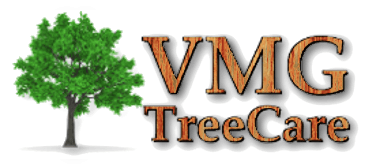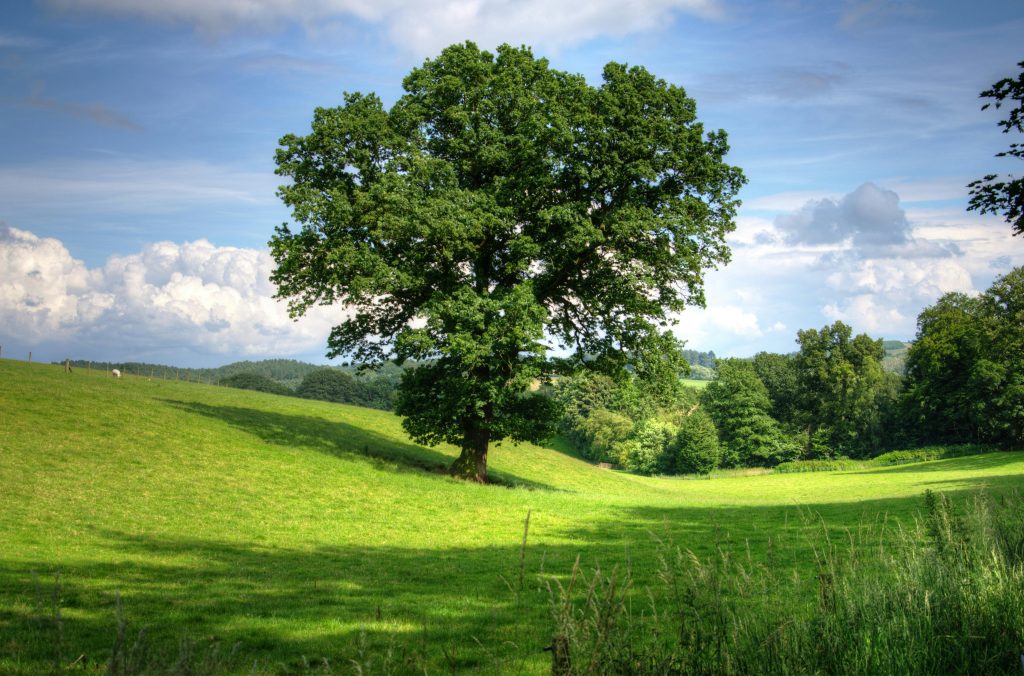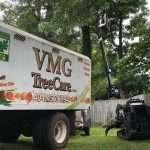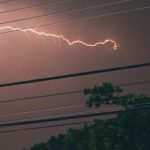Trees add beauty and value to our properties, providing shade, privacy, and a connection to nature. However, they can also pose significant risks if they become unhealthy or unstable. Ignoring the warning signs of tree issues can lead to property damage, personal injury, or even the loss of the tree. Identifying these issues early can prevent such problems and ensure the safety and health of your trees. Here are the top five signs your tree needs immediate attention.
1. Visible Damage to the Tree
Broken or Hanging Branches Storms, wind, or heavy snow can cause branches to break or hang precariously. These damaged branches can pose a serious risk, especially if they are overhanging a structure, driveway, or walkway. Broken branches can fall at any moment, causing injury or damage. If you notice any broken or hanging branches, it’s crucial to have them removed promptly by a professional.
Cracks in the Trunk Cracks or splits in the trunk are signs of structural weakness and can indicate that the tree is at risk of falling. These cracks can be caused by storm damage, age, or disease. A cracked trunk compromises the stability of the tree, making it more likely to fall during a storm or high winds. It’s important to have a professional arborist assess the tree to determine the best course of action.
2. Signs of Disease or Decay
Fungal Growth The presence of fungi, such as mushrooms or conks, growing on your tree is often a sign of internal decay. Fungi thrive on decaying wood and can indicate that the tree’s internal structure is compromised. This decay weakens the tree, making it more susceptible to breaking or falling. If you see fungal growth on your tree, it’s essential to have it inspected by a professional to assess the extent of the decay.
Discolored or Wilting Leaves Changes in leaf color or premature leaf drop can be signs of disease. Diseases such as anthracnose, powdery mildew, and root rot can cause leaves to discolor, wilt, or fall off. These symptoms can indicate that the tree is struggling to maintain its health and may need immediate attention. Specific diseases common in Atlanta can cause these symptoms, and early intervention can help save the tree.
3. Leaning or Unstable Trees
Sudden Leaning A tree that suddenly starts leaning, especially if the lean is more than 15 degrees, can indicate root damage or soil instability. A leaning tree is at a high risk of falling and can pose a serious threat to nearby structures and people. Immediate professional evaluation is necessary to determine if the tree can be stabilized or if it needs to be removed.
Shifting Soil or Exposed Roots Shifting soil or visible root exposure can affect the stability of a tree. If you notice that the soil around your tree has shifted significantly or that roots are exposed, it could indicate that the tree’s anchorage is compromised. This can happen due to erosion, construction, or natural root decay. Addressing these issues promptly can help prevent the tree from becoming a hazard.
4. Pest Infestations
Presence of Insects Insects such as bark beetles, aphids, and borers are common tree pests in the Atlanta area. These pests can damage trees by feeding on leaves, bark, and wood. Signs of insect infestation include small holes in the bark, sawdust-like frass, and wilting leaves. Insect damage can weaken the tree, making it more vulnerable to disease and structural failure. Professional pest control and tree care are necessary to address infestations.
Holes in the Bark Holes or tunnels in the bark can indicate insect activity. These holes can weaken the tree’s structure and provide entry points for disease. If you notice holes in your tree’s bark, it’s important to have a professional assess the damage and recommend treatment options.
5. Root Problems
Heaving Soil Soil upheaval around the base of the tree can signal root issues. This can be caused by root rot, poor soil conditions, or damage from construction. Heaving soil can affect the tree’s stability and health. Addressing root problems early can help prevent the tree from becoming a hazard.
Sparse Foliage Sparse or uneven foliage can indicate root damage or poor root health. If a tree’s roots are not healthy, it can’t absorb the necessary nutrients and water to support full, healthy foliage. Regular root inspections and appropriate treatments can help maintain root health and ensure the overall health of the tree.
Conclusion
Recognizing the signs that your tree needs immediate attention can help you take proactive steps to ensure the safety and health of your trees and property. Regular tree inspections and prompt action to address issues can prevent costly damage and keep your landscape beautiful and safe. If you notice any of these signs, don’t hesitate to contact VMG Tree Care for a professional assessment and expert tree care services.
If you’re concerned about the health or stability of your trees, contact VMG Tree Care today. Our experienced arborists are here to help you maintain a safe and healthy landscape. Schedule an inspection or consultation with us and ensure your trees are in good hands. Call us at 404-456-6794 or visit our main website for more information.



